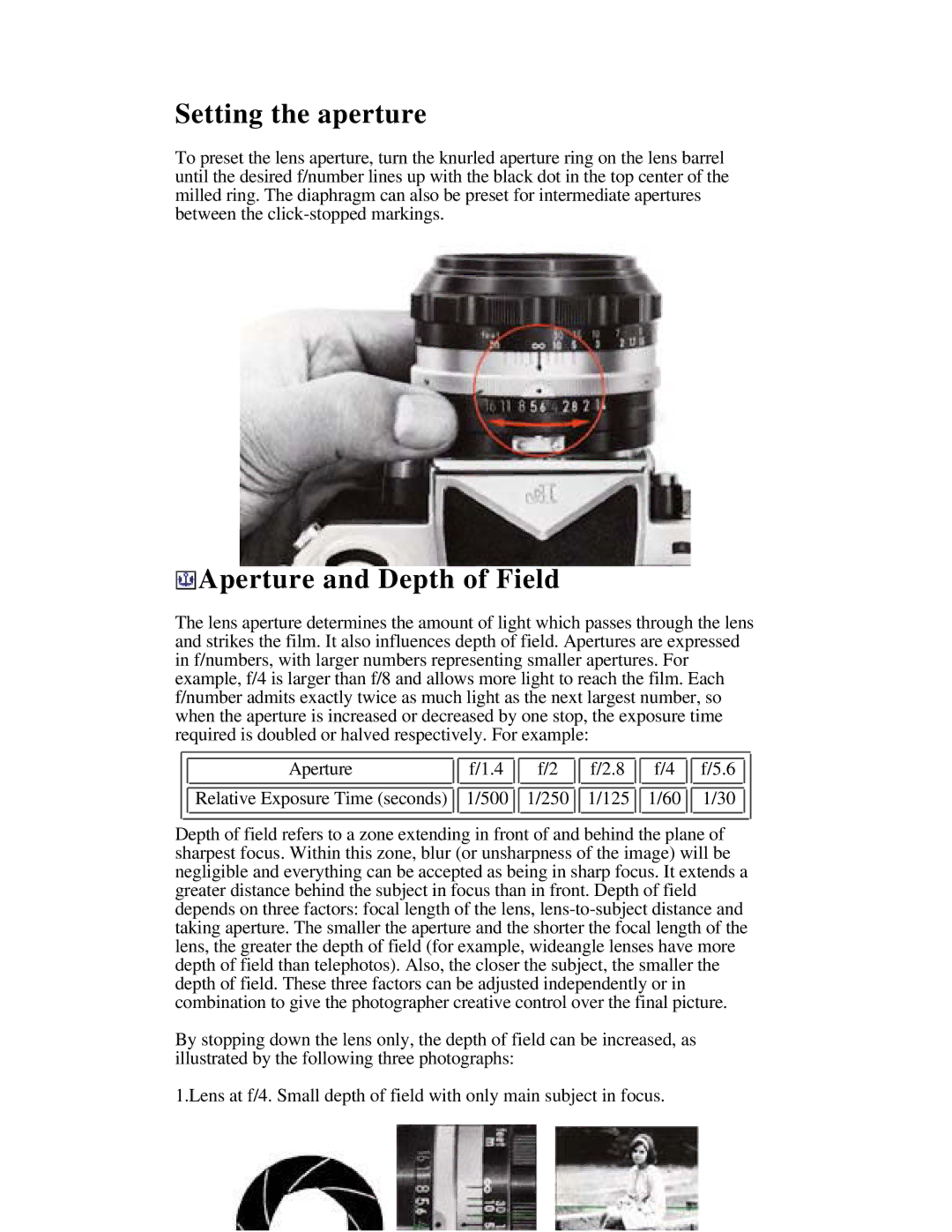
Setting the aperture
To preset the lens aperture, turn the knurled aperture ring on the lens barrel until the desired f/number lines up with the black dot in the top center of the milled ring. The diaphragm can also be preset for intermediate apertures between the
 Aperture and Depth of Field
Aperture and Depth of Field
The lens aperture determines the amount of light which passes through the lens and strikes the film. It also influences depth of field. Apertures are expressed in f/numbers, with larger numbers representing smaller apertures. For example, f/4 is larger than f/8 and allows more light to reach the film. Each f/number admits exactly twice as much light as the next largest number, so when the aperture is increased or decreased by one stop, the exposure time required is doubled or halved respectively. For example:
Aperture
Relative Exposure Time (seconds)
f/1.4
![]()
![]() 1/500
1/500
f/2
![]()
![]() 1/250
1/250
f/2.8
![]()
![]() 1/125
1/125
f/4
![]()
![]() 1/60
1/60 ![]()
![]()
f/5.6
1/30
Depth of field refers to a zone extending in front of and behind the plane of sharpest focus. Within this zone, blur (or unsharpness of the image) will be negligible and everything can be accepted as being in sharp focus. It extends a greater distance behind the subject in focus than in front. Depth of field depends on three factors: focal length of the lens,
By stopping down the lens only, the depth of field can be increased, as illustrated by the following three photographs:
1.Lens at f/4. Small depth of field with only main subject in focus.
